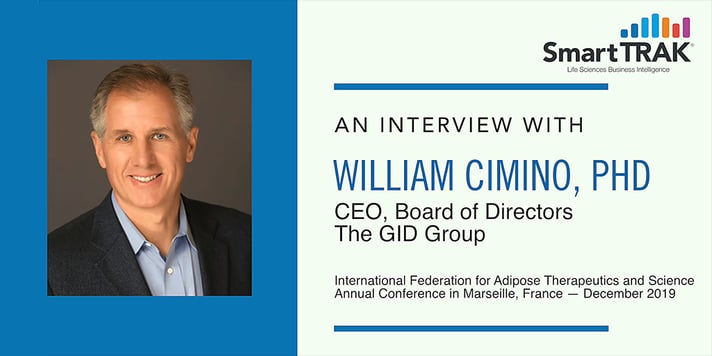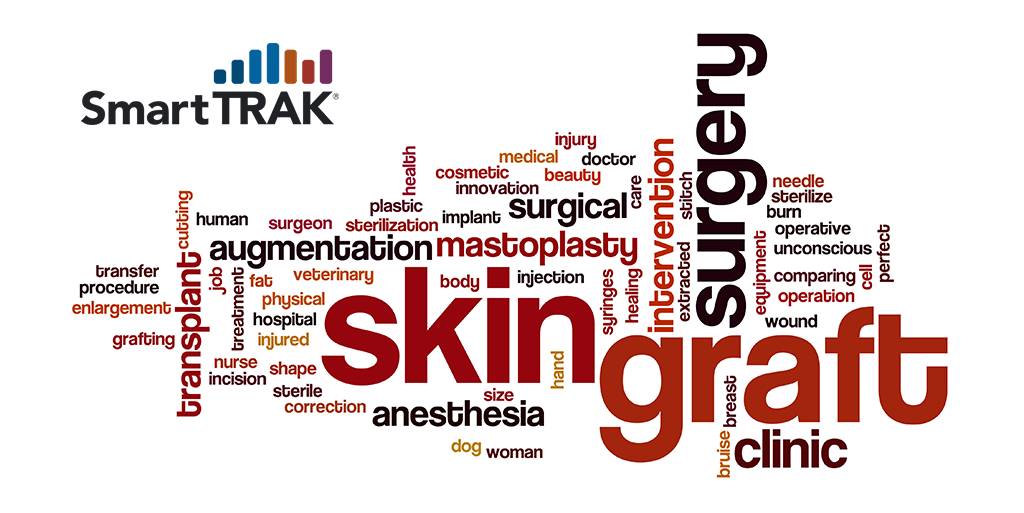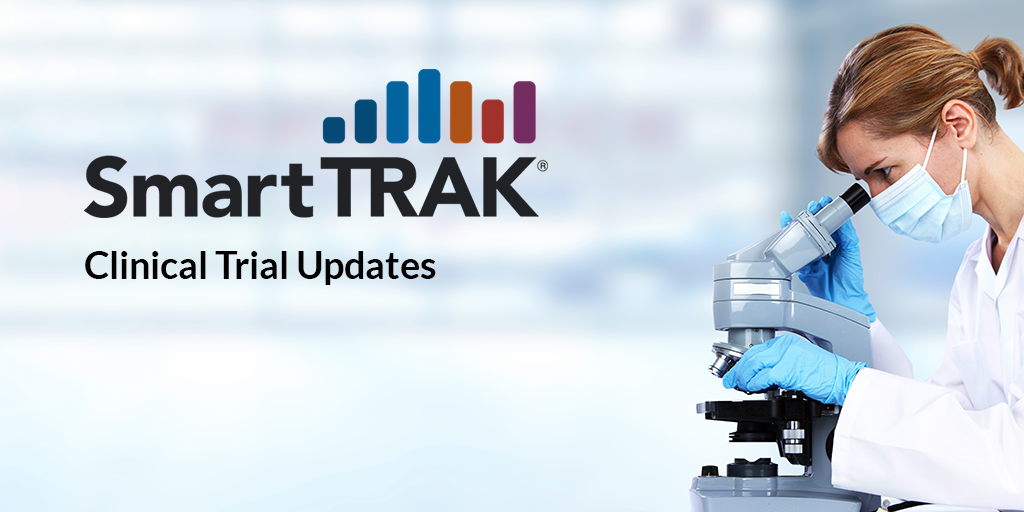 The GID Group – Prepping to revolutionize Regenerative Medicine with an innovative modular tissue processing platform
The GID Group – Prepping to revolutionize Regenerative Medicine with an innovative modular tissue processing platform
In December, at IFATS 2019, William “Bill” Cimino, PhD, CEO of The GID Group (GID) sat down with SmartTRAK to discuss the Company’s novel modular tissue processing platform, which reduces an entire GMP cell-processing facility to a single disposable device, enabling physicians to extract and process adipose tissue in real time for use in a wide range of applications.
GID is a privately held, clinical stage cellular medicine company currently working on developing a tissue processing platform, the GID SVF-2 device, that enables cell-based treatments.
To find out more about the GID Group, its revolutionary technology and product candidate, click on the following video to listen to SmarTRAK’s interview with Bill Cimino, recorded live at the IFATS Annual Meeting held in Marseille, France December 3-7, 2019. A transcript of the interview is also provided below.
The Company is initially targeting three therapeutic domains: musculoskeletal, dermal and organ, with several clinical trials in progress. At the top of GID’s R&D priority list, is a clinical trial for its lead product candidate, ACTIVci for Osteoarthritis (OA). This is a 39-patient, multisite, pivotal clinical trial, that is double blinded, randomized, placebo controlled, dose escalated and statistically powered. It has investigational device exemption (IDE) approval by the FDA. The OA trial titled “Adipose-derived SVF for the Treatment of Knee OA“ aims to examine the safety and efficacy of autologous adipose-derived stromal vascular fraction (SVF) cells processed with the GID SVF-2 device for pain, function and stiffness in the knees of osteoarthritic subjects.
ACTIVci is an exciting and promising novel single-injection treatment for knee OA and is the Company’s first product candidate to leverage GID’s patented tissue processing platform.
SmartTRAK: This is Freddy Buntoum with SmartTRAK reporting from the 17th annual IFATS meeting in Marseilles, France. This morning, I have the pleasure of speaking with Mr. Bill Cimino, CEO of the GID Group. Good morning, Bill.
Bill Cimino: Good morning.
Can you tell us a little bit about the GID Group and how it started and what is the company vision, and where do you see the company in the next say five years to 10 years from now?
Bill C: GID Group was founded by a small group of physicians who had a very fundamental background in cellular processing and basic science related to extraction of cells from adipose tissue. And their vision was to be able to move that from basic science to a cellular therapy that could be offered to patients. And so to be able to take a technology platform or a way to deliver those cells through, not only the scientific processing steps, but also through the regulatory process and into a way to deliver that actually to patients to translate all the way through the process.
Where do you see the company in the next five years? Are you currently in clinical development or do you have products commercialized? And then where do you see the company in the next 10 years?
Bill C: So the commercialization of cellular therapy products is still an ongoing effort with regulatory, with the FDA and other regulatory agencies around the world. We are in a phase three effort with the FDA clinical trial. We've completed the prior phases with good, nice, safe and solid clinical results and we got approval now with the FDA to start our final stage, pivotal stage, and we will be moving through that clinical trial and then into approval and commercialization. So we believe that we are really at the forefront of that effort in the United States from an approved cellular therapy with FDA for an indication.
So in five to 10 years, to get to your other question, we would see expanding and continuing to broaden the cellular therapy platform. The regulatory pathway requires a very focused and specific indication for us. The first one is osteoarthritis of the knee. Certainly within five years, broadening that application to arthritis and wider joints. Specifically hands, shoulders, other joints. But we also have other indications in what we call the dermal space or the integument ulcers and other chronic new situations where we have preliminary safety efforts and efficacy.
Can you provide some details about the GID SVF-2 technology platform and how it works exactly?
Bill C: The SVF-2 platform, it's really a tissue processing platform and the development effort was to bring a tissue processing facility and technologies and processing that is required into a very concentrated simple or much more simple function so that we can process the tissue at point of care and within 60 minutes. So bringing all the GMP type of steps in processing into a very, it actually into a disposable single use device. So tissue comes in, it's processed and the targeted cells come out in cellular base.
GID highlights that it's tissue processing platform reduces an entire GMP cell processing facility to a single disposable device. Can you clarify how you're able to achieve this and how it maintains and ensures the compliance with the FDA's HCT/P regulatory framework and especially with the current good manufacturing practices.
Bill C: The platforms we looked at, we had a lot of fundamental background in the basic science and tissue processing, so looking at the tissue processing from start to finish, we were able to take those processes and steps and provide a control around each one and integrate all of those and we were able to integrate it into a single device. So it was really at a study of all of the processing steps involved from the harvest at the patient all the way through the various steps that would be required to produce an output and to be able to bring those into a sterile single use disposable. That was really the focus of the effort.
With regard to regulatory, this entire process and the device and the technology platform are all subject to the HCT/P and GMP regulations of the FDA. And the FDA is requiring us and the process to be able to show to them, prove to them all of the steps required. So we not only have to look at the device and the platform characteristics, but we also, the FDA wants to quantify the cellular output, the characteristics of the cellular output, what cells are in there, how it's, how much residual collagenases and take it a step further in therapeutic output, a proof statement in the clinic.
My next question is GID is developing a product candidate, ACTIVci, with potential applications for the treatments of muscular skeletal conditions. Why is the GID choosing to focus in the area of the adipose tissue and SVF cellular implants for this market in particular?
Bill C: So adipose tissue, there's two questions you have. One in orthopedics and adipose. Adipose tissue really has some win-win characteristics with respect to a muscular skeletal application. One, there's tissue available. Patients or subjects would be willing to provide from a sample standpoint so that we could extract cells. So most people have a wealth of adipose that we could get, that they would willingly give up. The second is adipose tissue is the richest source in the body of stromal cells that we can extract. So per unit volume there is a tremendous supply of the stromal cells that we are targeting for isolation and extraction. So it's the richest source and there's some available. The third is stromal cells that we're extracting, which are the types of cells that apply to musculoskeletal applications. So the tissues of the musculoskeletal system are the cartilage, the bone, and the synovium tendon. These are tissues that are responsive to strong repair.
Is GID seeking approval for ACTIVci for osteoarthritis in the U.S. Only or are you also targeting other countries too?
Bill C: Our first and primary direction is in the U S with the FDA. We have fledgling or initial efforts also in Europe, in Brazil. These are initiated efforts and each of those regulatory processes is quite involved on, but our primary application is the FDA...Or our primary direction.
Okay. And can you tell me how is ACTIVci going to be differentiated from other products or regenerative therapies that are currently on the market as a treatment of knee OA?
Bill C: ACTIVci is a cellular implant. It's a cellular. So with regard to the primary therapeutic and really the only therapeutic alternative for osteoarthritis, severe arthritis, is a joint replacement and total joint replacement, total or partial joint replacement. So a cellular implant is an alternative to a metal or plastic implant. It has huge differentiation. It's a minimally invasive procedure. You walk in, walk out in less than say two hours. It's your own cells and clinically, we've been able to substantiate clinical outcomes, and really very good for subjects, for patients.
Which product segment do you anticipate ACTIVci will disrupt? And can you talk about the potential strategies for capturing market shares?
Bill C: We feel that a cellular implant will be disrupted and it's disruptive on two fronts. One is therapeutic results providing a superior result for osteoarthritis pain and function. And the second disruption is a financially or a cost. The cellular implant is going to be the total procedure costs. It's going to be significantly less than a total joint replacement.
Can you give us a price range on the product?
Bill C: We don't at this point have pricing established or worked out, but for an example, in the United States, a cellular implant would be on the order of a quarter of the cost of a total joint replacement for knee.
Can you talk a little bit about the potential commercial strategy for this product? Is the GID Group going to employ a number of direct sales reps or are you going to leverage any distributor network?
Bill C: That is to be determined based on how things progress with the FDA and the approval, but we are looking at several commercialization strategies that could be really effective.
So Bill can you tell us which is the customer base that you are targeting for ACTIVci?
Bill C: Cellular therapy is going to be a... An effective cellular therapy's going to be a real disruption for treating osteoarthritis or other musculoskeletal disease. The customer base is really those people seeking an alternative way to treat osteoarthritis pain, which is a very large number. The estimate in the United States that there's 30 million diagnosed arthritic patients currently in the United States, of which half of those 14 million are osteoarthritis of the knee and all of those people are seeking pain and functional relief and their only alternative realistically is the end stage now is a total joint replacement and so that customer base is a very significant large number of people seeking relief.
Right. Are you looking to go into the private clinic, outpatient setting, surgical hospitals settings or...?
Bill C: Actually, this procedure can be done in any of those, but because it is minimally invasive and it's walking in walk out in two hours. It really would be most likely targeted to surgery centers, clinics and procedures where this minimally invasive procedure can minimize not only a cost but time and involvement for the subject.
And so far cell based therapies have faced quite a bit of headwind with regards to reimbursement. What do you anticipate reimbursement will be for procedures that will utilize the ACTIVci product? Can you give us any insights?
Bill C: The headwinds for reimbursement are easily understood. If you do not have significant clinical proof and sort of defined or demonstrated efficacy and safety, reimbursement is going to be very difficult to get. Even more important as regulatory compliance or regulatory approval. Without those two things, reimbursement won't occur. If you look at the headwinds that you're speaking, none of the so-called efforts in products that are out there have either defined clinical proof or the regulatory approval to be in the markets. And it's not surprising. So for us, reimbursement is an early step in the process and we are clearly focusing on the clinical proof statements we are going to use for regulatory approval and then our reimbursement strategy will then be able to follow that with those, the approval and the proof statements.
Would you care to provide us with any updates or progress on the GID's other product candidates?
Bill C: Sure. So we have several smaller clinical trial efforts, clinical research efforts ongoing, several of them to expand the arthritis platform and shoulders, other joints. And the results are very similar to a successful showing in knees. We also have efforts in chronic wounds and diabetic ulcers, so significant wounds of this peripheral vascular disease, wounds of the skin. And those results are showing the surprising or not surprising but very strong response as well as. Several of those results are being actually presented at the conference here.
At the IFATS conference, there's a great deal of buzzing so far about standardization. Can you tell me what is your interpretation of what is meant by standardization and based on your interpretation, what do you think it would take for anything concrete to happen say over the next five years?
Bill C: Good, good question. Standardization is in my, view always comes around to terminology in defining terms and language around a consistent description of process and items and technology and being able to call it then consistently among people. For example, we've had some questions, and this is a common thing about adipose derived stem cells. Even the definition of what is a stem cell and are there stem cells in adipose tissue is, is both a misnomer and inaccurate. And so, to be able to call types of cells that we would be using therapeutically in a consistent and standardized way is going to be at least step one. Now how fast that occurs, as you've asked, in five years, I think efforts are proceeding quite a bit quickly. I would certainly expect within five years there would be some level of language standardization.
And then my last question is what do you think of some of the trends that you're seeing today and maybe in the future that could benefit or impact the potential for adipose derived stem cells to become a recognized or established regenerative medicine therapy? Specifically, for the orthopedic diseases and conditions?
Bill C: I believe that cellular based therapies are really going to become transformational, specifically in musculoskeletal disease, degenerative musculoskeletal disease. The cellular implants and cellular therapies really provide a means of therapeutic to deliver a therapy for which we have really nothing that we can do today. Short of a total joint replacement, which is really not therapeutic, it's a major surgery and it certainly is a valuable tool to address pain and so not to diminish the success of total joint replacement. As an alternative cellular implants provide a therapeutic disruption that provides at least as good or in our results, better results than a total joint replacement for reduction of pain, but also total joint replacement is the single largest cost to reimbursement systems. For example, Medicare's single largest cost for a single therapy, total joint replacement for the knee. The cellular therapies can be offered at a significant cost savings to the healthcare system. I think that cellular implants and cellular therapies are therefore going to be disruptive in a similar way that in the cardiac world when we first got catheters for angioplasty and then stents, we transform the CABG or the open heart bypass procedure to a catheter base, minimally invasive, much less, you know, trauma to the patient and with results that were superior to the CABG procedure. So I think orthopedics is going to see that kind of revolution, but it's going to be on a cellular therapy side.
SmartTRAK is the leading source of competitive intelligence used by the top 10 global orthopedic & top 15 wound care companies. If you would like a demo of all SmartTRAK has to offer and how we can help increase proficiency, improve productivity and reduce costs for your company, just click the button below.






